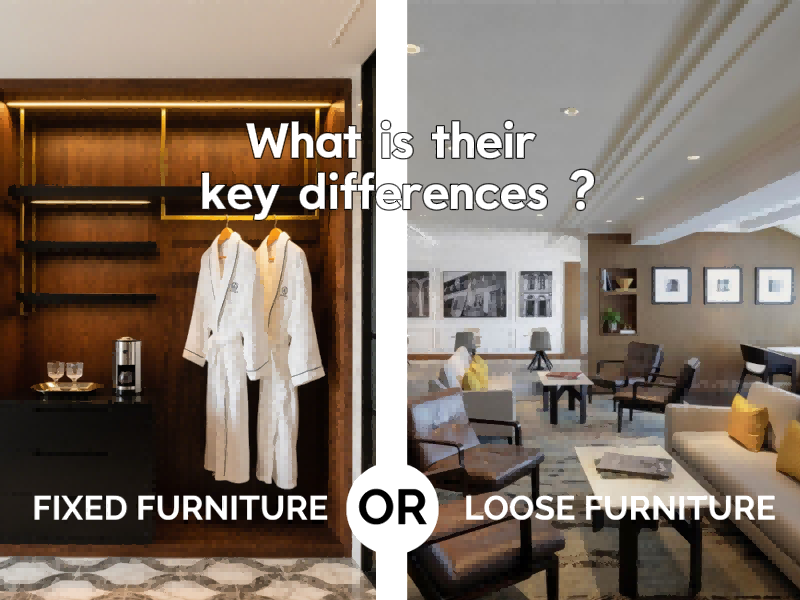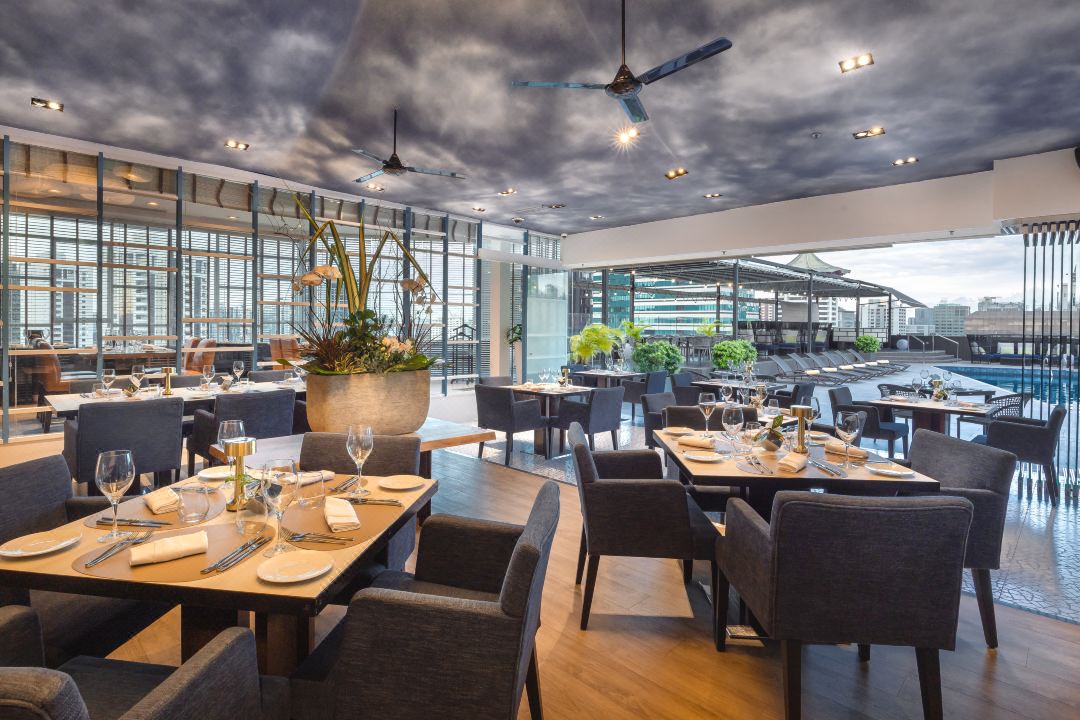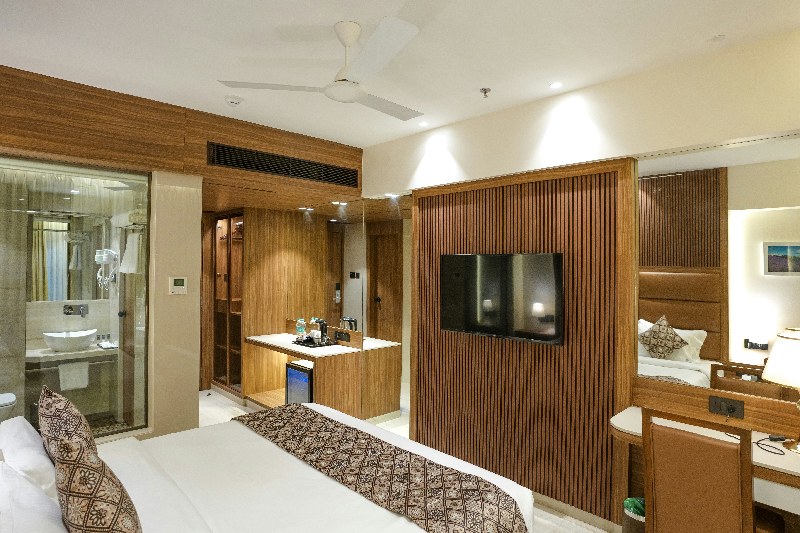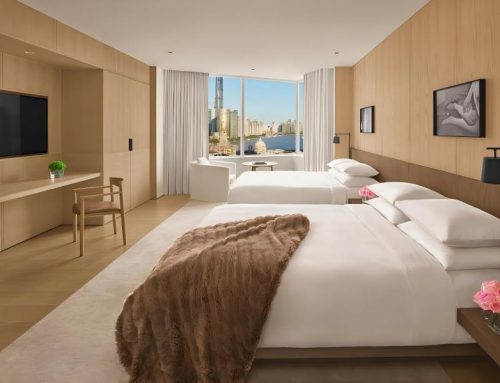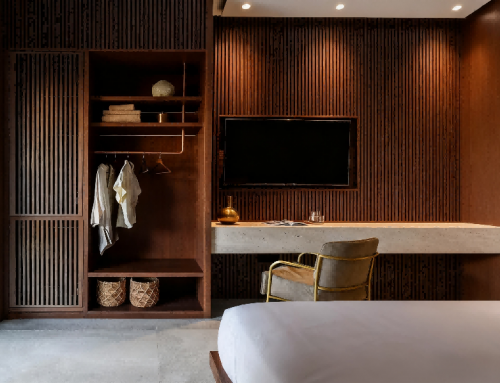Selecting the right luxury hotel furniture is one of the most critical steps in creating a five-star guest experience. Every item — from beds to wardrobes — impacts not only aesthetics but also functionality, durability, and long-term brand value. In hospitality FF&E projects, two major categories define furniture planning: Loose Furniture and Fixed Furniture.
Both serve distinct purposes, and understanding their differences is essential for hotel project managers, interior designers, and procurement professionals who want to balance design, budget, and operational efficiency.
Furniture isn’t just decoration—it defines the guest experience.
What is Loose Furniture?
Loose furniture refers to movable and flexible items that are not permanently attached to the structure of the building. These pieces can be repositioned, replaced, or upgraded with ease, making them ideal for adaptable spaces.
✅ Examples:
Beds, sofas, chairs, armchairs, coffee tables, nightstands, consoles, ottomans, bar stools, lounge chairs.
Key Characteristics:
✔️ Movable & Replaceable – Can be rearranged or swapped without major renovation.
✔️ Flexible Design – Easier to update for new trends or seasonal concepts.
✔️ Standardized or Customizable – Available in various styles, fabrics, and finishes.
What is Fixed Furniture?
Fixed furniture, also known as built-in furniture, is permanently installed and becomes part of the room’s architecture. It provides a seamless, integrated look and maximizes space efficiency.
✅ Examples:
Wardrobes, headboards, vanity counters, TV units, wooden wall panels, built-in benches, storage cabinets.
In markets such as the UK, fixed furniture must comply with BS 5852:2006 fire safety regulations (BSI Group) to meet hospitality industry standards.
Key Characteristics:
✔️ Permanent Installation – Attached to floors, walls, or ceilings.
✔️ Tailored Design – Fully customized to fit the exact dimensions and style of the space.
✔️ Space Optimization – Ideal for maximizing storage and creating a cohesive design.
✅ Furniture Classification in Different Hotel Areas
Making The Right Choice
The decision between fixed and loose furniture depends on the specific needs and dynamics of your hotel. Here are some expert tips to guide your selection:
✅ Focus on Guest Experience – Loose furniture adds flexibility and comfort; fixed furniture ensures a premium, cohesive look.
✅ Plan for Longevity – High-traffic areas need durable fixed solutions; guest rooms can benefit from flexible loose options for periodic upgrades.
✅ Consider Maintenance & Operations – Fixed items reduce clutter and provide stability, while loose items allow easy replacement without major disruption.
✅ Budget & Design Balance – Fixed furniture may require higher upfront investment but adds long-term value; loose furniture allows design refresh without significant cost.
Pro Tip: For 5-star hotels, the best approach is a strategic mix of both—fixed furniture for functional elements (like wardrobes, vanities) and loose furniture for comfort and flexibility (sofas, chairs, tables).
Why Does This Matter for Hotel Projects?
✅ Guest Experience – Loose furniture adds comfort and flexibility, while fixed furniture ensures a premium, integrated look.
✅ Operational Efficiency – Proper planning minimizes maintenance issues and improves durability.
✅ Brand Identity – Fixed elements help maintain design consistency, while loose items can be refreshed to keep interiors current.
Looking for a trusted partner for custom hotel furniture?
At IFC Hotel Furniture, we specialize in bespoke loose and fixed furniture solutions for luxury hotels worldwide. From concept design to production, we ensure precision, durability, and elegance in every piece.
Contact us today to discuss your next project and discover how we can bring your design vision to life.

